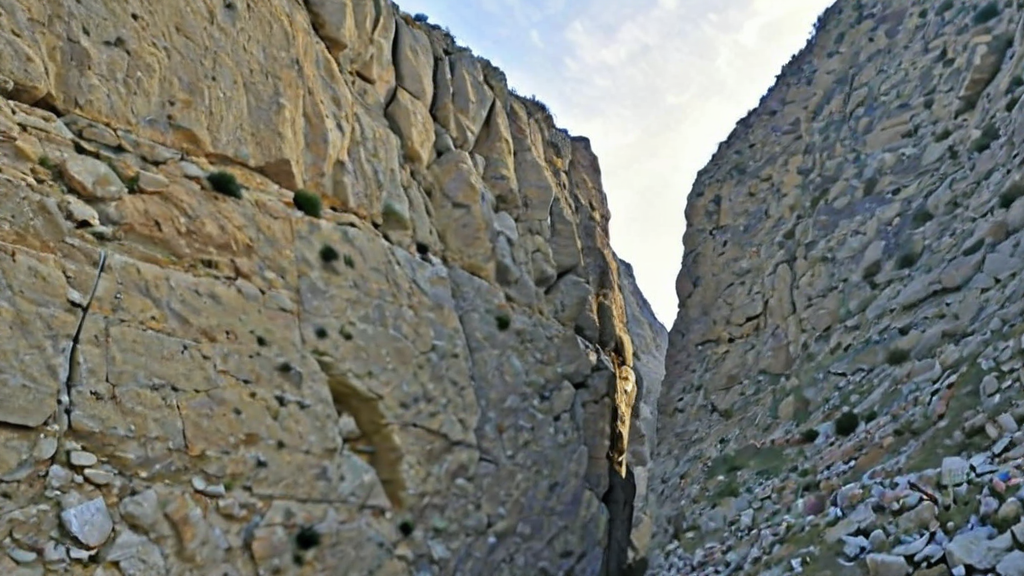In the information age, it seems that there is no corner of the planet that has not been explored, documented and **mapped**. Google maps and the satellites that surround us have meant that the expression terra incognita, which was used on ancient maps to indicate areas unknown to Westerners, has lost all meaning.
Faced with this reality, many of us feel nostalgia for the past, for those times when explorers and explorations, surprises and the surprising, were common. At that time, true gems, feats and amazing or simply curious facts were hidden.
A British explorer and diplomat
We are going to travel to that period to remember the figure of the British mountaineer and explorer Eric Shipton (Sri Lanka, 1907 – Ansty Manor, 1977). You may not know him, but Shipton was one of the pioneers in the reconnaissance and attempts to climb Everest, and at the same time, as we will see, he carried out diplomatic functions in the service of the British Empire. Among his achievements are the conquest of Kamet, five expeditions to Everest (1933, 1935, 1936, 1938, 1951), the discovery of the Nanda Devi sanctuary, a failed attempt at Muztagh Ata, eight published books and dozens of ascents in the five continents. Between August 1940 and October 1942, and August 1946 and October 1948, he served as Consul General of Her British Majesty in the Chinese city of Kashgar (Xinjiang) and during these two consecutive **stays** he discovered, in a remote place , the existence of a natural arch of enormous proportions known as Shipton’s Arch. The adventures and three attempts that led to his definitive discovery are recorded in a book published in 1950 under the title Mountains of Tartary. Chapter five (“The arch”) is dedicated almost entirely to the ** description ** of it and at the beginning we can read the following: “25 miles west-northwest of Kashgar there is a chain of sharp rocky ridges. From Kashgar, and seen from above, it does not seem very impressive because it is half hidden by an amorphous mass of desert hills (…) While traveling from Kashgar to Tashkent in 1942, at the height of Min-Yol and about 25 miles from the first city, I could see that one of the peaks was pierced by a hole that seemed to start 200 feet below the summit and reach almost to the ground. From 10 miles away it was difficult to get an idea of the size of that colossal hole, but by my calculations, the vault must have been about 1,000 feet high.
It was not until many years later that I had the opportunity to try to study this extraordinary phenomenon. Underestimating the difficulty of the task, my wife and I left Kashgar one weekend in January 1947 with this purpose…“.
A natural arch that was lost and recovered
But what is truly unique about this case is not the discovery of the arch but its disappearance. For some years, Shipton Arch was listed in the Guinness Book of Records as the largest natural arch in the world, but as no one found it again, as no one repeated the visit, it was excluded from the catalogue. Its rediscovery occurred more than half a century later, in May 2000, when a five-member expedition sponsored by National Geographic (http://publications.americanalpineclub.org/articles/12200140200/Asia-China-Kun-Lun- Shan-Shiptons-Arch-First-Ascent) was able to **relocate it** following the instructions written by Shipton. The details of the discovery appeared a few months later, in the December issue of the English edition of the magazine, in an article signed by Jeremy Schmidt and titled “Journey to Shipton’s lost arch.”
We now know that the arch in question is located near the city of Artux or Artush, capital of the Kizilsu prefecture (Xinjiang), at 2,973 meters above sea level, and that it is locally known as Toshuk Tagh (Uyghur) or the by Atushi Tianmen (Chinese). The first is usually translated as “mountain of the hole” and the second as “gate to heaven.” This gigantic conglomerate vault is located at the head of a gorge several hundred meters deep and, therefore, its dimensions vary depending on the point chosen to carry out the calculations. The most optimistic, the one that takes the base of the ravine as a reference, attributes a maximum height of 460 meters and an average width of 55.
A few years ago, the Chinese authorities decided to turn this natural monument sculpted by the elements into a major attraction. In addition to building and paving a road to the parking lot and visitor center that precedes the training, they also enabled a three-kilometer path to facilitate access for tourists by providing it with wooden walkways, stairs, benches, tables, railings, a viewpoint panoramic and depriving it of all its magic.

